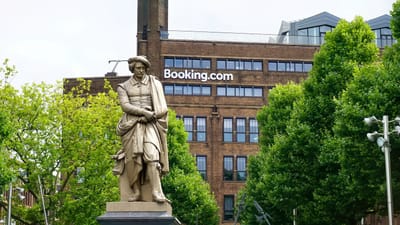Boosting Conversions: A/B Testing Your Online Booking Process
A/B testing is a powerful tool for optimizing your online booking process and increasing conversion rates. By systematically testing different elements of your booking flow, you can identify what resonates best with your audience and make data-driven decisions to improve user experience. This comprehensive guide will walk you through the essentials of A/B testing for your booking process, including what elements to focus on, how to analyze your results effectively, and implement changes that drive conversions. Whether you're new to A/B testing or looking to refine your approach, this article will provide valuable insights to help you boost your online bookings and grow your business.Table of Contents:

Understanding A/B Testing for Booking Processes
A/B testing, also known as split testing, is a method of comparing two versions of a web page or app to determine which one performs better. In the context of online booking processes, A/B testing involves creating two variations of your booking flow and directing a portion of your traffic to each version. By measuring the performance of each variant, you can identify which elements contribute to higher conversion rates.For booking processes, A/B testing can help you optimize various aspects such as form design, button placement, pricing display, and even the overall structure of your booking steps. The goal is to create a seamless, user-friendly experience that encourages more visitors to complete their bookings.
Do you need a website? Want to build a website but don't know where to start? Our website builder is the perfect solution. Easy to use, and with the ability to customize to fit your business needs, you can have a professional website in no time.
Key Elements to Test in Your Booking Flow
When A/B testing your booking process, focus on elements that have the potential to significantly impact user behavior and conversion rates. Some key areas to consider include:1. Call-to-Action (CTA) buttons: Test different colors, sizes, and text on your booking buttons.
2. Form fields: Experiment with the number of fields, their order, and input types.
3. Progress indicators: Compare different styles of showing booking progress to users.
4. Pricing display: Test various ways of presenting prices, discounts, and fees.
5. Trust signals: Evaluate the impact of security badges, customer reviews, and guarantees.
6. Page layout: Compare different arrangements of booking elements on the page.
7. Mobile optimization: Test specific elements for mobile users to improve their booking experience.
By systematically testing these elements, you can identify which variations lead to higher conversion rates and a smoother booking process for your users.
Setting Up Effective A/B Tests
To ensure your A/B tests yield reliable results, follow these best practices:1. Test one element at a time: This allows you to clearly attribute any changes in performance to the specific element being tested.
2. Determine sample size: Use statistical significance calculators to ensure you have enough traffic for meaningful results.
3. Run tests simultaneously: Conduct your A/B tests at the same time to avoid external factors influencing the results.
4. Set a clear hypothesis: Define what you expect to achieve with each test and why.
5. Use appropriate tools: Utilize A/B testing software or features within your analytics platform to accurately track and measure results.
Remember that A/B testing is an ongoing process. Continuously test and refine your booking flow to stay ahead of changing user preferences and industry trends.
Building a website with SITE123 is easy
Analyzing A/B Test Results
Once your A/B test is complete, it's crucial to analyze the results carefully to draw meaningful conclusions. Here are some key steps in the analysis process:1. Check for statistical significance: Ensure that the difference in performance between variants is statistically significant to avoid making decisions based on random chance.
2. Look beyond conversion rates: While conversion rate is important, also consider metrics like bounce rate, time on page, and average order value.
3. Segment your data: Analyze how different user groups (e.g., new vs. returning visitors, mobile vs. desktop users) respond to each variant.
4. Consider the full funnel: Evaluate how changes in one part of the booking process affect other stages of the user journey.
5. Document your findings: Keep detailed records of your test results, including screenshots and data, for future reference and learning.
By thoroughly analyzing your A/B test results, you can gain valuable insights into user behavior and preferences, informing your optimization strategy moving forward.
Implementing Changes and Continuous Improvement
After analyzing your A/B test results, it's time to implement the winning variations and continue optimizing your booking process. Follow these steps for effective implementation:1. Gradually roll out changes: Implement the winning variant incrementally to ensure it performs well for all users.
2. Monitor post-implementation performance: Keep a close eye on key metrics after implementing changes to confirm the improvements persist.
3. Plan follow-up tests: Use the insights gained from each test to inform future experiments and refinements.
4. Stay up-to-date with industry trends: Regularly research best practices in online booking and user experience to inspire new test ideas.
5. Collect user feedback: Complement your A/B testing with user surveys and feedback to gain qualitative insights into your booking process.
Remember that optimization is an ongoing process. Continuously test, learn, and refine your booking flow to stay competitive and provide the best possible user experience for your customers.





